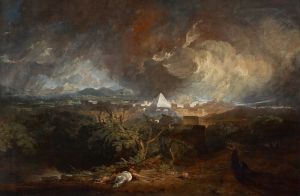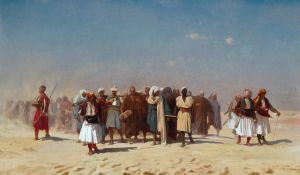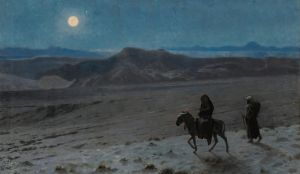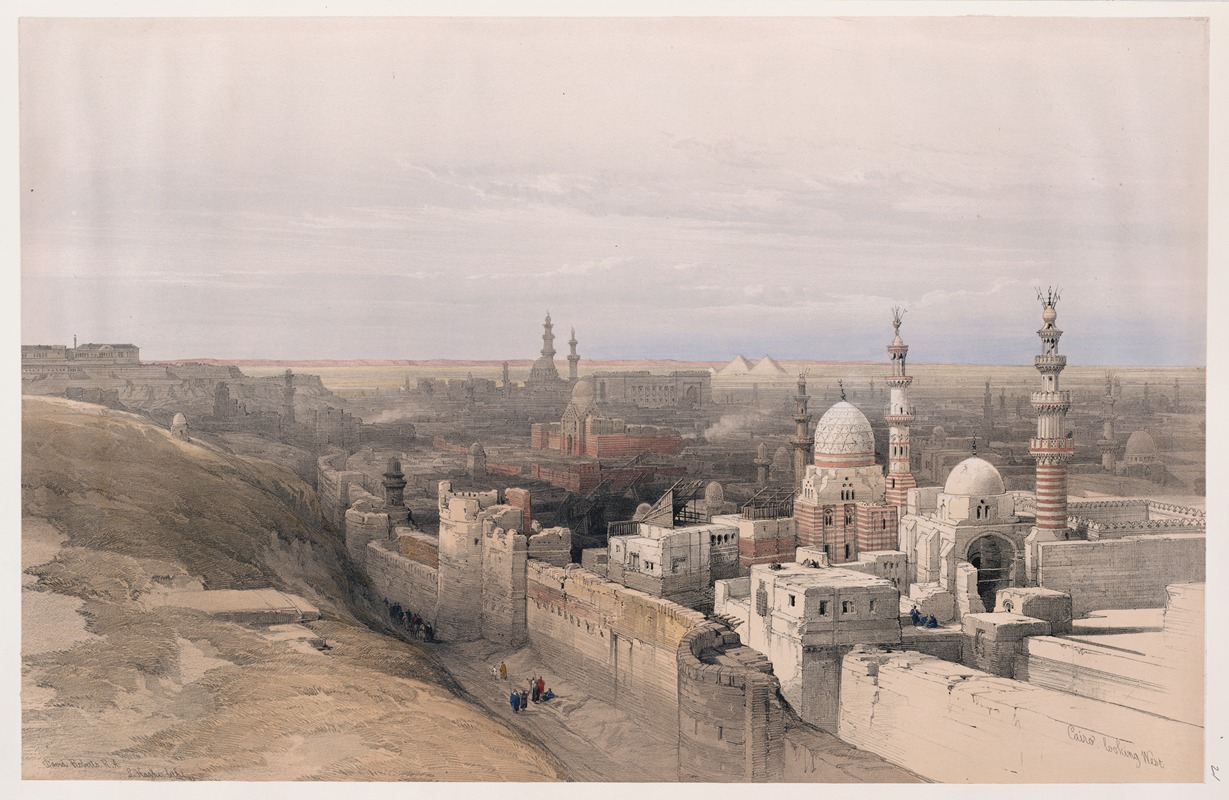
Cairo; looking west.
A hand-painted replica of David Roberts’s masterpiece Cairo; looking west., meticulously crafted by professional artists to capture the true essence of the original. Each piece is created with museum-quality canvas and rare mineral pigments, carefully painted by experienced artists with delicate brushstrokes and rich, layered colors to perfectly recreate the texture of the original artwork. Unlike machine-printed reproductions, this hand-painted version brings the painting to life, infused with the artist’s emotions and skill in every stroke. Whether for personal collection or home decoration, it instantly elevates the artistic atmosphere of any space.
David Roberts was a Scottish painter known for his detailed and picturesque depictions of landscapes and architecture, particularly those of the Middle East and North Africa. One of his notable works is "Cairo; looking west," which captures a view of the Egyptian capital, Cairo. This painting is part of Roberts' extensive collection of lithographs and paintings that document his travels in the region during the 19th century.
David Roberts was born in 1796 in Stockbridge, Edinburgh, and initially worked as a house painter before pursuing a career in art. He gained recognition for his theatrical scene painting, which eventually led him to focus on landscape and architectural subjects. In 1838, Roberts embarked on a journey to the Middle East, which would become the defining expedition of his career. He traveled through Egypt, the Holy Land, and other parts of the region, producing sketches and studies that he later developed into finished works.
"Cairo; looking west" is one of the pieces resulting from Roberts' travels. The painting provides a panoramic view of Cairo, showcasing the city's unique blend of ancient and Islamic architecture. The scene is likely to include notable landmarks such as the Citadel of Cairo, mosques, and the bustling life of the city, all set against the backdrop of the Nile River and the distant desert. Roberts' attention to detail and his ability to capture the essence of the places he visited made his works highly popular in Europe.
Roberts' journey to the Middle East was significant not only for his career but also for the Western perception of the region. His works were among the first to provide a comprehensive visual record of these areas, which were relatively unknown to European audiences at the time. The accuracy and detail of his paintings and lithographs offered a glimpse into the architecture, landscapes, and daily life of the Middle East, contributing to the 19th-century Orientalist movement in art.
The lithographs based on Roberts' sketches were published in a series titled "The Holy Land, Syria, Idumea, Arabia, Egypt, and Nubia," which was released between 1842 and 1849. These publications were well-received and widely distributed, further cementing Roberts' reputation as a leading artist of his time. The works were accompanied by text written by the Scottish writer and antiquarian George Croly, providing context and descriptions of the scenes depicted.
Roberts' artistic style is characterized by its precision and clarity, with a focus on architectural and topographical accuracy. His use of light and shadow, combined with his meticulous attention to detail, creates a sense of depth and realism in his paintings. "Cairo; looking west" exemplifies these qualities, offering viewers a window into the vibrant and historically rich city of Cairo as it appeared in the 19th century.
Today, David Roberts' works are held in high regard and can be found in various museums and private collections around the world. They continue to be appreciated for their historical significance and artistic merit, providing valuable insights into the landscapes and cultures of the Middle East during a time of great exploration and discovery.





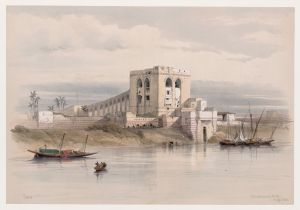
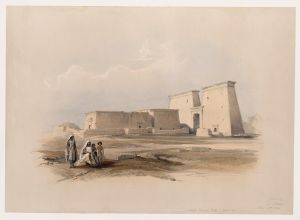
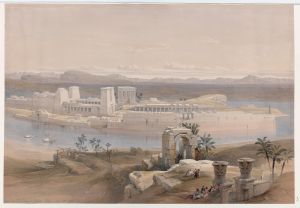
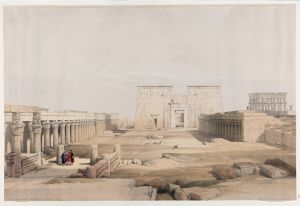
![Interior of the mosque of the Metwalys [Metwalis].](/imgs/217497/s/david-roberts-interior-of-the-mosque-of-the-metwalys-metwalis-d41ed7bd.jpg)
![Lateral view of the temple called the Typhonæum, at Dendera [Dandara].](/imgs/217507/s/david-roberts-lateral-view-of-the-temple-called-the-typhonaeum-at-dendera-dandara-b378b9d7.jpg)
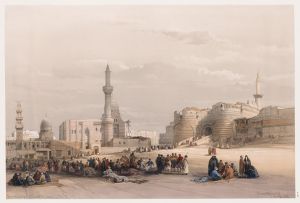
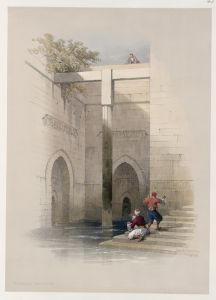
![Tombs of the Khalifs [Caliphs], Cairo.](/imgs/217567/s/david-roberts-tombs-of-the-khalifs-caliphs-cairo-375b2402.jpg)
![View on the Nile looking towards the pyramids of Dashour [Dahshûr]and Saccara [Saqqârah].](/imgs/217572/s/david-roberts-view-on-the-nile-looking-towards-the-pyramids-of-dashour-dahshurand-saccara-saqqarah-6cb692fe.jpg)
![Street scene in Cairo. [Title vignette, vol. 3]](/imgs/217627/s/david-roberts-street-scene-in-cairo-title-vignette-vol-3-2a84db8.jpg)
